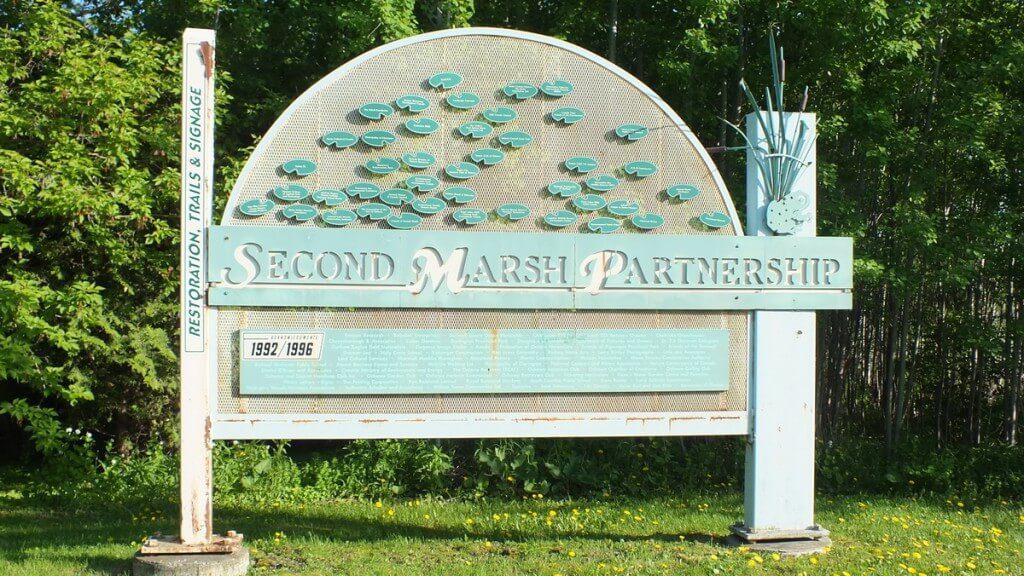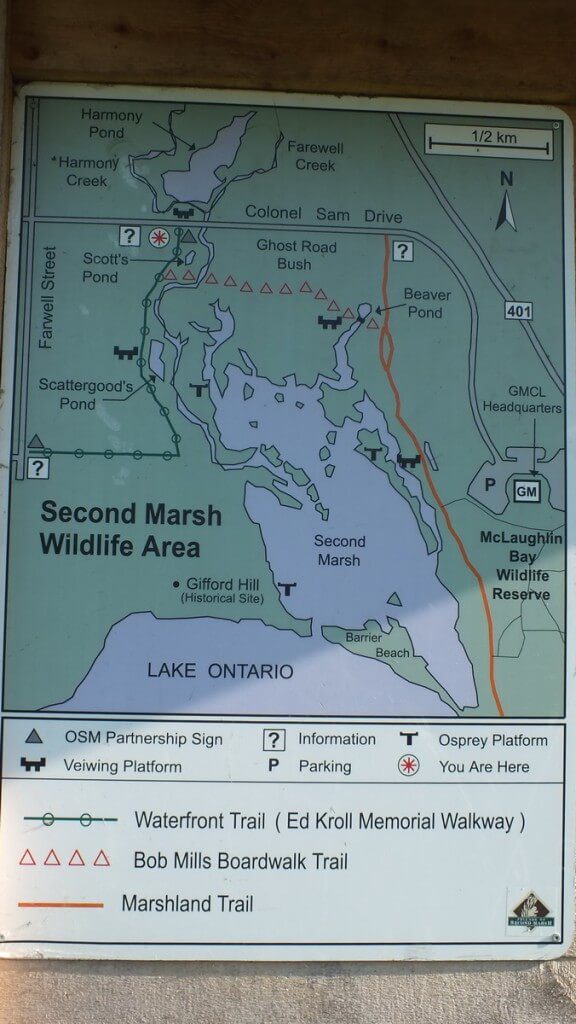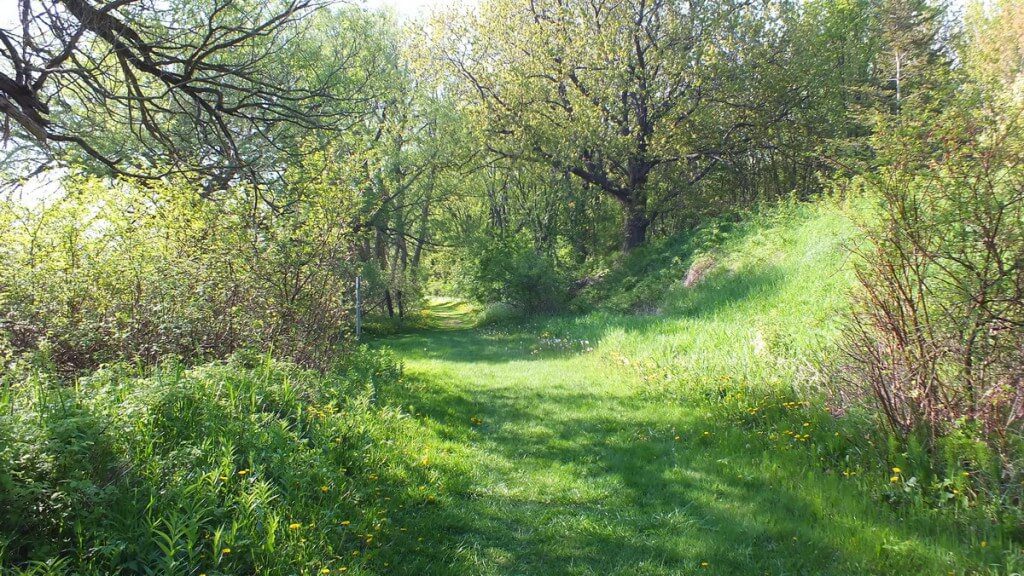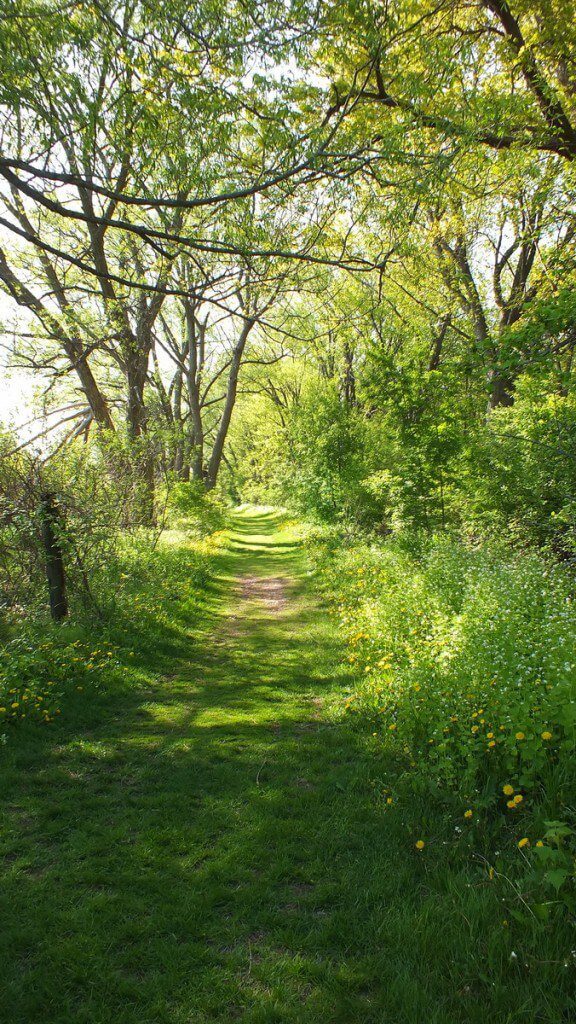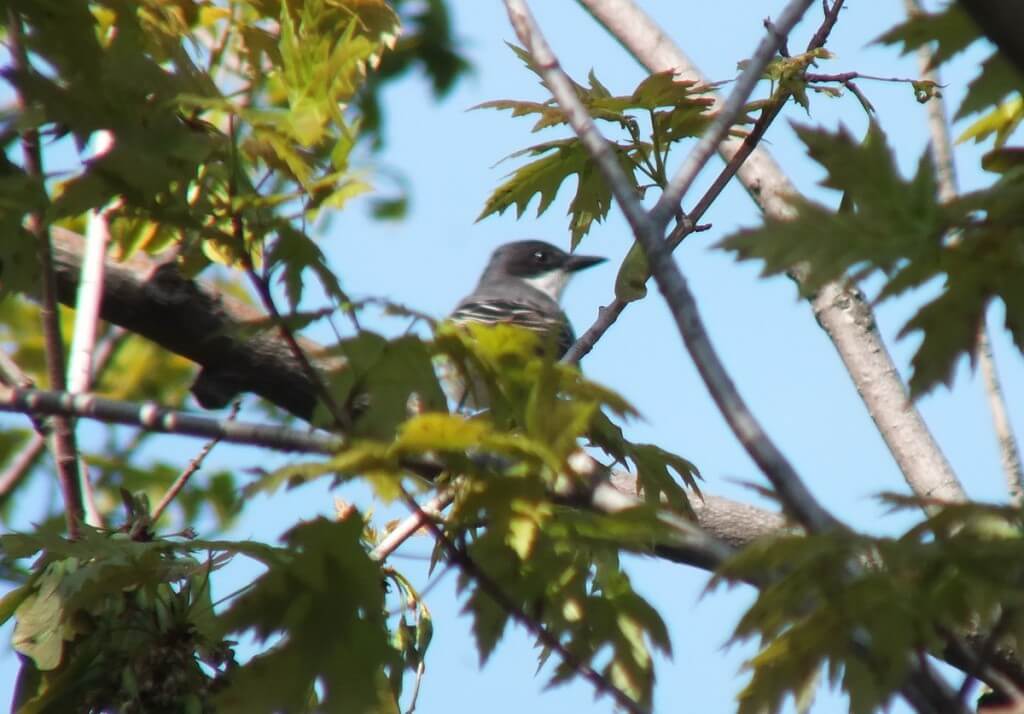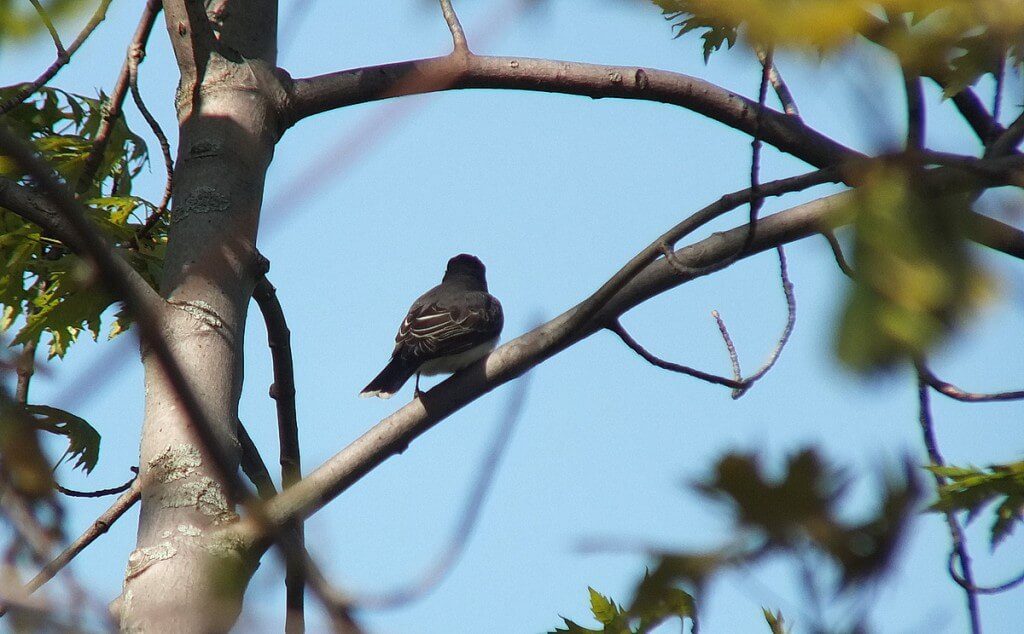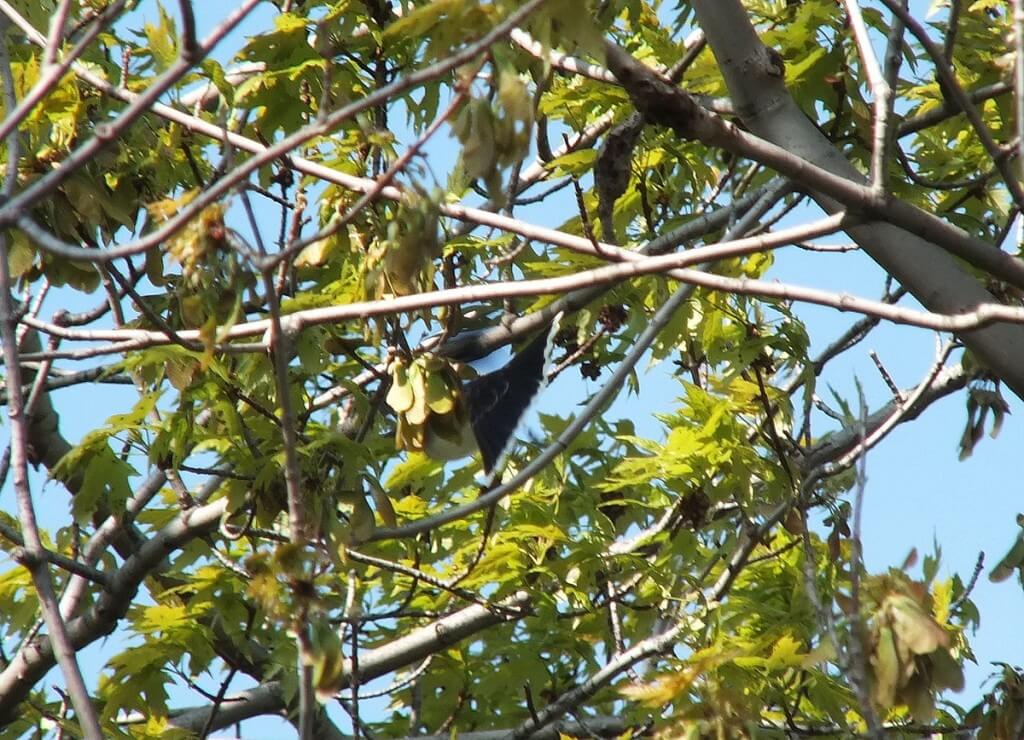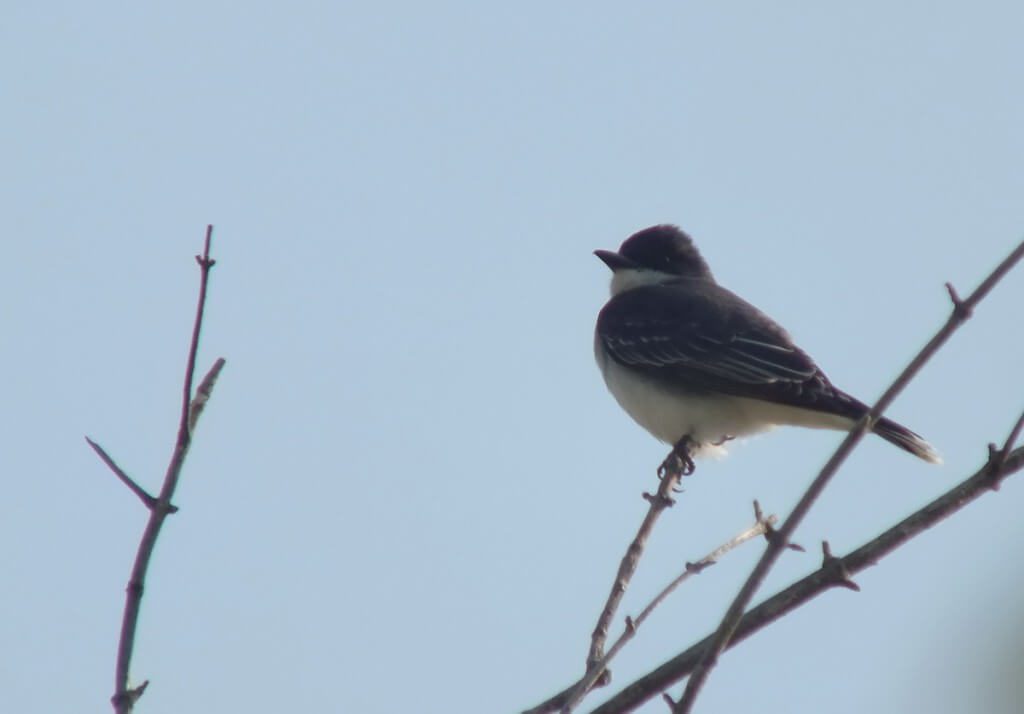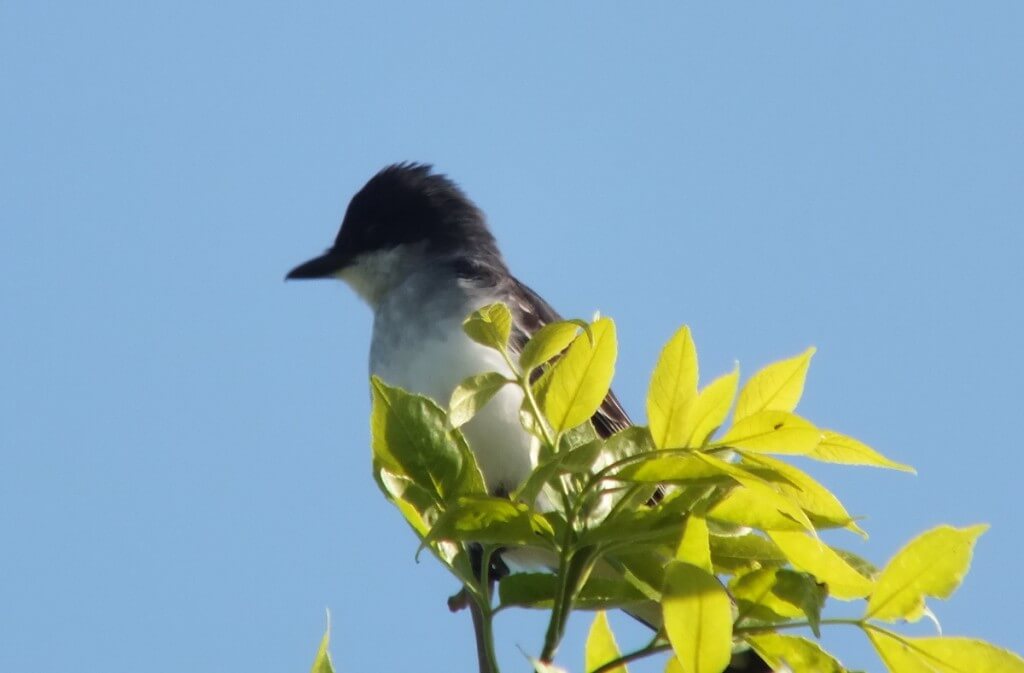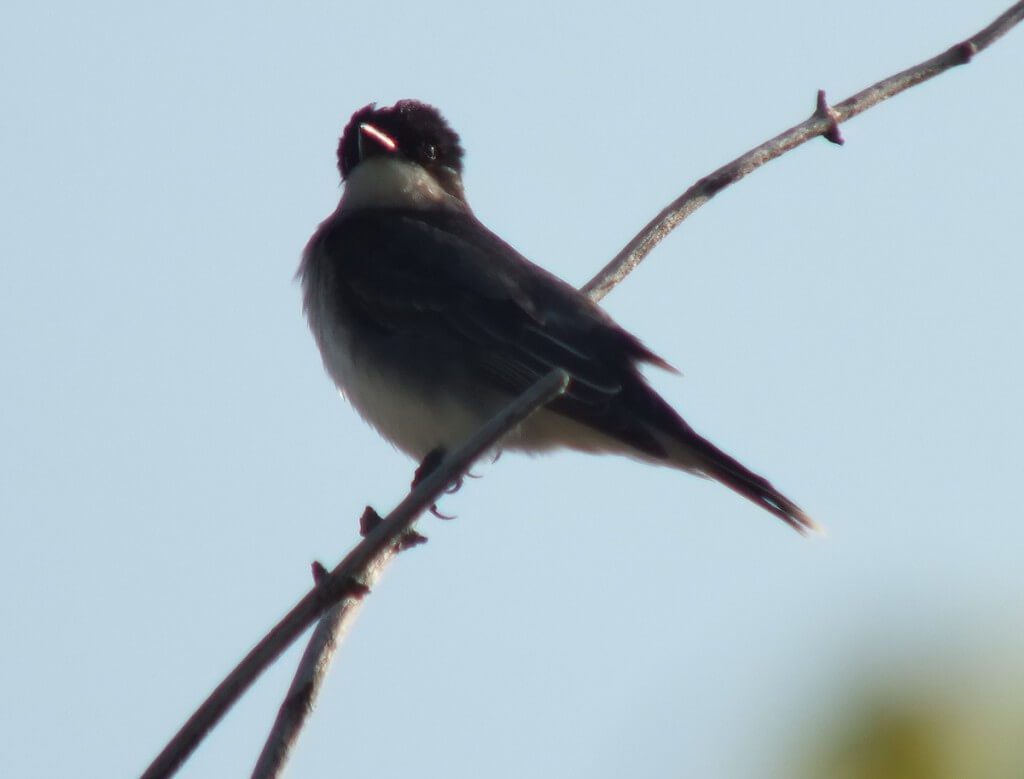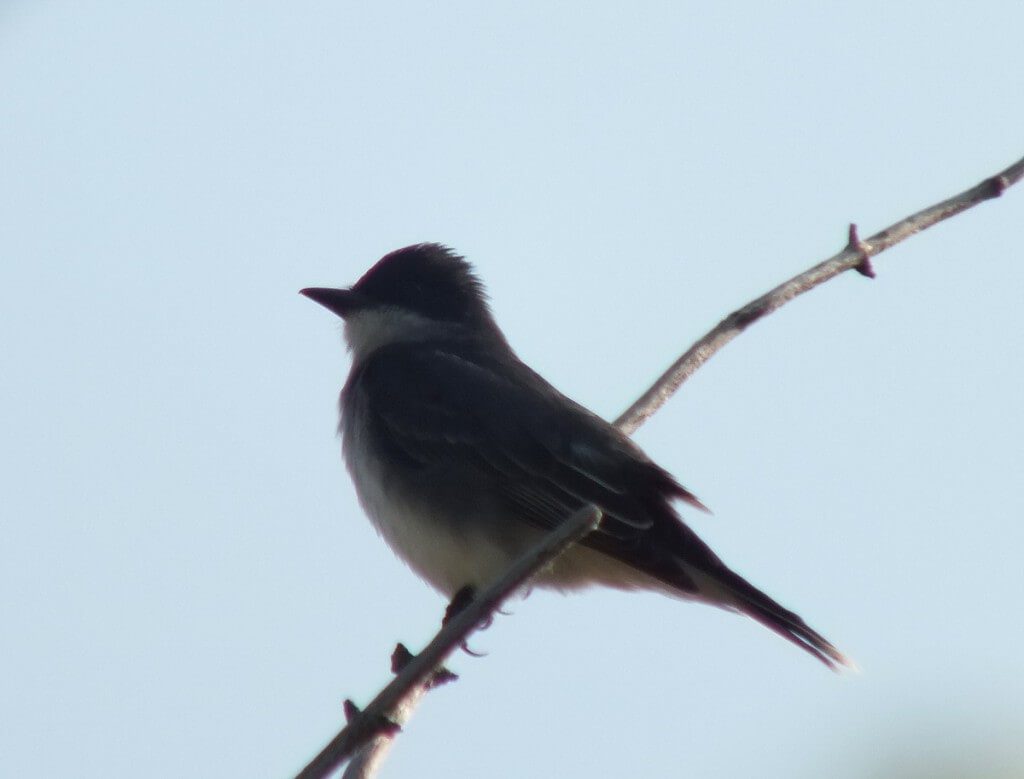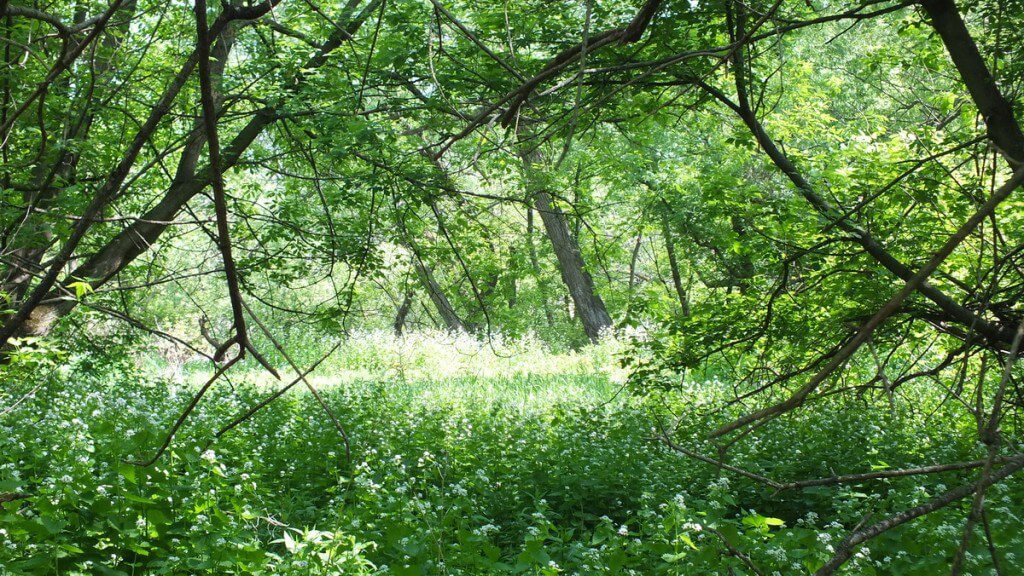Eastern Kingbird At Second Marsh In Oshawa
Second Marsh Wildlife Reserve provides wonderful opportunities for birdwatching, and on a visit to that extensive wetland in Oshawa, Bob and I were lucky to see an Eastern Kingbird (Tyrranus tyrannus).
In combination with McLaughlin Bay Wildlife Reserve, Second Marsh represents the largest remaining wetland in the Greater Toronto Area, in total nearly 400 hectares of protected land.
An extensive trail system guides visitors through marsh, swamp, wet meadows, a barrier beach and woodlot habitats.
It makes for an interesting way to spend a day when exploring all of the various terrains and promises bird and wildlife sightings owing to the variety of habitats.
A soft onshore breeze wafted over our hot skin as Bob and I walked along the Marshland Trail, and the trees echoed with the lilting tunes of many a different songbird.
We had reached the end of the Woodland Trail, where it emerges onto the shore of Lake Ontario, and turned back on the Cool Hollow Trail for a change of scenery.
I love the whimsical name of the trail…Cool Hollow…but, in actual fact, that section of the trail is well named for the path led us through a grassy glade that bordered the forest. Everything was lush and green with new growth giving the air a fresh sweet smell.
Peering into the trees at the edge of the forest, Bob and I caught sight of a black and white bird near the top of a maple tree. It darted in and out of the leaves so we had a hard time noting any distinguishing marks.
When it finally came to rest with its back towards us, the telltale white tip of the black tail gave it away. We were looking at an Eastern Kingbird.
Eastern Kingbirds are flycatchers. They will sit on a perch and fly out to catch flying insects, which might explain why this Eastern Kingbird was flitting about the maple tree in earnest.
As Bob and I retraced our steps along the Marshland Trail, we happened upon two more Eastern Kingbirds at rest on two adjacent trees. The late afternoon sun was against us, so the birds were quite backlit, but still we could appreciate the snowy white underparts in contrast to the slate grey back, head and wings.
The head of an Eastern Kingbird has darker plumage than the rest of its body, but seldom seen is the red patch on its crown for which the bird is named. Only when threatened by a predator will the bird use the red feathers to good effect by lifting them up. Eastern Kingbirds appear to have a crest on their heads because often the crown feathers are raised.
The birds stayed put for the most part, using different branches in the same trees, as we looked on…
maybe because they were interested in our activity. The one Kingbird actually cocked its head as if puzzled about something.
Bob and I left the Kingbirds basking in the sun at the top of the trees. It was very late in the afternoon so insects would soon be emerging from the cool shadows, but the pair of Kingbirds would have only until sunset to snatch up a few bugs.
We, ourselves, retreated along the Bob Mill’s Boardwalk, over the Beaver Pond, passed the shimmering waters of Scott’s Pond, and to our waiting car. It had been a full and long afternoon.
Frame To Frame – Bob and Jean


